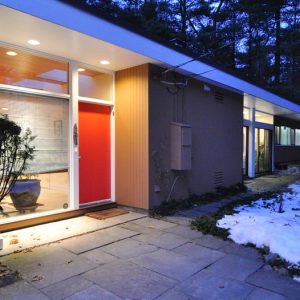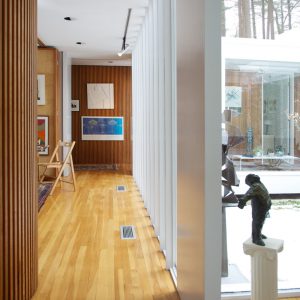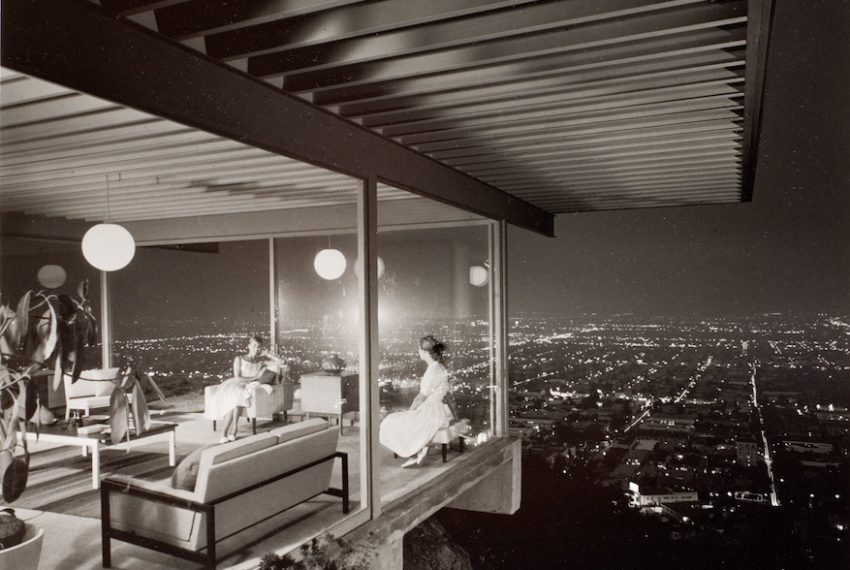
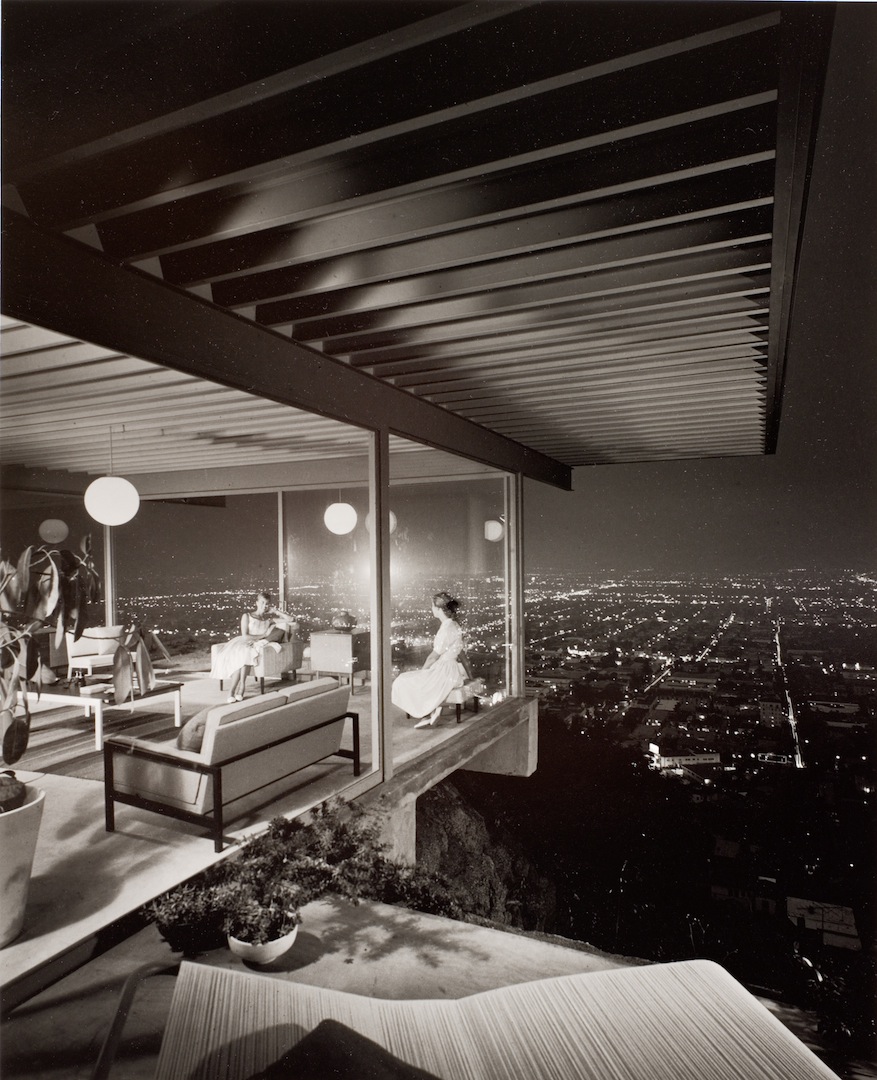

On view from March 29 to July 6, 2014
From the press release sent by PEM:
SALEM, MA – The Peabody Essex Museum (PEM) presents California Design, 1930–1965: Living in a Modern Way, an exhibition of more than 250 mid-century modern design objects. A diverse array of works including furniture, textiles, fashion, classic vehicles and much more celebrates the impact of California designers between 1930 to 1965. The output of legendary designers Charles and Ray Eames, Richard Neutra and R.M. Schindler, along with previously unheralded figures, is contextualized within the creative climate of California and the social and cultural conditions of the time. Organized by the Los Angeles County Museum of Art (LACMA), this exhibition is the first major study of modern California design. PEM’s presentation is the exhibition’s only East Coast venue — on view from March 29 to July 6, 2014.
California Design shows how California became mid-century America’s most important source of progressive architecture and furnishings and explores the state’s influence on the nation’s material culture. Four thematic sections — Shaping, Making, Living and Selling — tell the origins of modern California design, its materials and makers, and the dissemination of a California look and modern lifestyle worldwide.
ECONOMIC BOOM
The influx of millions of new residents to California during the economic boom of the 1920s ignited a demand for modern housing and furnishings that significantly increased during and immediately following World War II. America’s postwar prosperity afforded a new consumer class opportunities to furnish and decorate their homes with goods made by the state’s designers and craftspeople.
“The goal was to provide well-designed, accessible and affordable modern homes and furnishings to millions of Californians and those around the country who craved them,” said Austen Barron Bailly, PEM’s George Putnam Curator of American Art, formerly of LACMA. “The designers who embraced California modern ideals wanted to make everyday life beautiful and comfortable. They responded to California’s environment and pioneered new ways to meld craft production with industrial manufacturing.”
A CULTURE OF INNOVATION
Working with a spirit of modernism and experimentation, California designers adopted new materials and production methods leading to innovations in form and function for objects and architecture. A tremendous synergy arose between local designers and émigrés who brought European modernism and advanced professional training in art, architecture, craft and design to the Golden State. Opportunities created by housing and population booms, as well as the burgeoning motion picture industry, propelled this culture of innovation and experimentation. The phenomenon only accelerated when California took the lead in aerospace and defense manufacturing during World War II. Creative peacetime applications of wartime technologies and materials such as plywood, fiberglass and steel furthered exploration. Charles and Ray Eames epitomized the ingenuity of California designers by creating molded plywood furniture and toys using techniques developed during World War II to make lightweight leg splints for wounded soldiers.
ENVIRONMENT
In 1951, émigré designer Greta Magnusson Grossman declared, California design “is not a superimposed style, but an answer to present conditions … It has developed out of our own preference for living in a modern way.” The distinctive vocabulary of the California house and its furnishings at mid-century emerged from a response to the temperate climate that permitted indoor-outdoor living. New construction techniques and domestic applications for materials enabled architects to re-envision the open-plan home and collapse traditional boundaries between indoor and outdoor environments. New uses for steel, for example, allowed walls to open for floor-to-ceiling windows and doors, diminishing the boundaries between the outdoor environment and domestic interiors.
DESIGN ICONS
California has meant sunshine and the next perfect wave on the horizon for generations, and California designers provided new ways to enjoy them. Developments in fiberglass technology transformed the ubiquitous surfboard and made possible the sleek, sculptural profiles of mid-century automobiles. In the exhibition, a 1964 Studebaker Avanti with its fiberglass body and futuristic grille-less nose exemplifies American automotive exuberance. The material culture produced in California became a gleaming, larger-than-life reflection of the entire country, and can be seen in the objects presented in California Design — from the comfortable, mobile existence offered by a 1930s aluminum Airstream Clipper trailer to the 1959 Barbie doll typifying California beach culture and the sophisticated glamour of Hollywood film stars.
By the end of the 1960s, the relentless optimism that made California the embodiment of the good life became far more subdued. Counterculture protests and ecological and social justice issues challenged the very idea of consumerism and unbridled growth. These shifting beliefs, however, did not diminish the lasting contributions of California design at mid-century. California Design tells a story of the exhilarating innovation and enthusiasm for building a better, brighter and more modern world.
PUBLICATIONS
The accompanying 360-page catalogue, edited by Wendy Kaplan, is co-published by LACMA and MIT Press, and features essays by Kaplan and Bobbye Tigerman, along with other leading architecture and design historians.
The exhibition’s second publication, A Handbook of California Design, 1930-1965: Craftspeople, Designers, Manufacturers, edited by Bobbye Tigerman, documents the lives and work of more than 140 significant mid-twentieth century figures in California design and was created by the internationally renowned graphic designer Irma Boom.
PUBLIC PROGRAMS
Opening Day Celebration | Saturday, March 29, 10 am–4 pm
Come join us for gallery talks; a lecture by California Design curator Wendy Kaplan followed by Q&A with her and PEM’s coordinating curator Austen Barron Bailly; a film, art making and indoor recreation fun with the Airstream in the Atrium. Also, The Tannery Series partners with PEM to lead a conversation about the changing lives of women in the 1950s and ‘60s. Titled From Bullet Bras to Bra Burning, the talk explores fashion, feminism and the way the home-front became a crucible of social change.
Engage with an Elephant | Select Saturdays, 10:30 am–12:30 pm (March 29 to May 31) | Visit pem.org/calendar for dates
Check out the toy elephant that husband-and-wife designers Charles and Ray Eames made. The couple invented a way of molding plywood that they used in many of their designs. Join a museum educator in the California Design exhibition to explore this piece and other examples of creative innovation
Members-Only Gallery Talks | Wednesday, April 16, and Friday, April 25, 9 am
Reservations by April 15 and April 24 | Members $20
Austen Barron Bailly, The George Putnam Curator of American Art and coordinating curator of California Design, 1930–1965: Living in a Modern Way, leads the first talk. Gavin Andrews, assistant director for family, student and teacher programs and interpretive liaison for the exhibition, leads the second. Tours are held exclusively for members before the museum opens.
Evening Party | Thursday, April 17, 6 – 9 pm
Enjoy standup comedy and improvisational performances, see demos of ’50s and ’60s hairstyling, test your listening skill in our ‘name that theme song’ contest and much more. Come dressed as your favorite ’60s sitcom character! Our evening is inspired by the exhibition California Design: Living in a Modern Way.
The Hot Seat: Explore form and function in innovative chair design
Wednesdays, May 7 and 14, 6–8 pm | Saturdays, May 10 and 17, 10 am–12:30 pm
Reservations by May 1 | $220 members, $260 nonmembers
With inspiration from California Design, 1930–1965: Living in a Modern Way, students learn to use traditional and nontraditional materials to transform chair design. Led by instructor Jeff Elsbecker, a sculptor, designer and professor of fine art.
ABOUT THE PEABODY ESSEX MUSEUM
Founded in 1799, the Peabody Essex Museum (PEM) presents outstanding works of artistic and cultural creativity in ways that transform people’s lives. The museum’s collection is among the finest of its kind, showcasing an unrivaled spectrum of American art and architecture as well as outstanding Asian, Asian export, Native American, African, Oceanic, maritime and photography collections. In addition to its vast holdings, the museum offers a vibrant schedule of changing exhibitions and an interactive education center. The museum campus features numerous parks, period gardens and 22 historic properties, including Yin Yu Tang, a 200‐year‐old house that is the only example of Chinese domestic architecture on display in the United States. Currently, a comprehensive $650 million Campaign is underway to advance PEM’s mission, fortify its endowment, improve infrastructure and build a 175,000-square-foot expansion. HOURS: Open Tuesday-Sunday, 10 am–5 pm and the third Thursday of every month until 9 pm. Closed Mondays (except holidays), Thanksgiving, Christmas and New Year’s Day. ADMISSION: Adults $18; seniors $15; students $10. Additional admission to Yin Yu Tang: $5. Members, youth 17 and under and residents of Salem enjoy free general admission and free admission to Yin Yu Tang. INFO: Call 866‐745‐1876 or visit our Web site at www.pem.org
